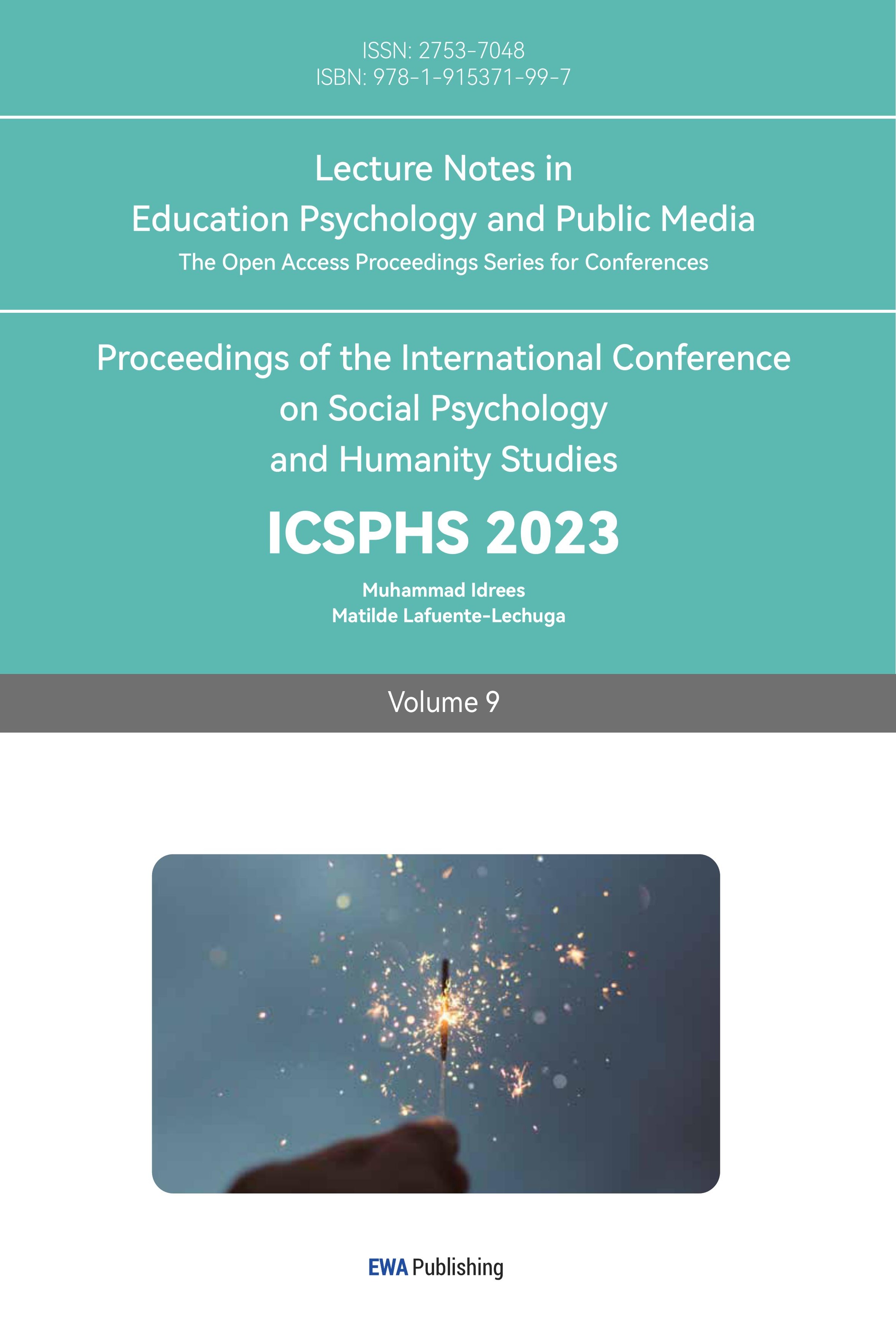References
[1]. Subrahmanian R 2005 Gender equality in education: Definitions and measurements Int. J. Educ. Dev. 25 395-407.
[2]. Brynin M 2017 The gender pay gap Equality and Human Rights Commission 1-67.
[3]. Hinnosaar M 2019 Gender inequality in new media: Evidence from Wikipedia J. Econ. Behav. Organ. 163 262-76.
[4]. Homan P 2017 Political gender inequality and infant mortality in the United States Soc. Sci. Med. 182 127-35.
[5]. Lloyd C, Grant M and Ritchie A 2008 Gender differences in time use among adolescents in developing countries: Implications of rising school enrollment rates J. Res. Adolesc. 18 99-120.
[6]. Lutz W 2006 Fertility rates and future population trends: will Europe's birth rate recover or continue to decline? Int. J. Androl. 29 25-33.
[7]. Nargund G 2009 Declining birth rate in developed countries: A radical policy re-think is required Facts Views Vis Obgyn. 1 191-3.
[8]. Ventura S and Hamilton B 2011 U.S. teenage birth rate resumes decline NCHS data br. 58 1-8.
[9]. Sansone D 2017 Why does teacher gender matter? Econ. Educ. Rev. 61 9-18.
[10]. Griffiths M 2006 The feminization of teaching and the practice of teaching: Threat or opportunity? Educ. Theory 56 387-405.
[11]. Albanesi S and Sahin A 2017 The gender unemployment gap NBER 30 47-67.
[12]. Sasongko G and Huruta AD 2019 The causality between inflation and unemployment: the Indonesian evidence JBTP 20 1-0.
Cite this article
Zhang,C. (2023). Gender Equality and Progress Analysis in Representative Regions Based on Maslow's Hierarchy of Needs. Lecture Notes in Education Psychology and Public Media,9,190-199.
Data availability
The datasets used and/or analyzed during the current study will be available from the authors upon reasonable request.
Disclaimer/Publisher's Note
The statements, opinions and data contained in all publications are solely those of the individual author(s) and contributor(s) and not of EWA Publishing and/or the editor(s). EWA Publishing and/or the editor(s) disclaim responsibility for any injury to people or property resulting from any ideas, methods, instructions or products referred to in the content.
About volume
Volume title: Proceedings of the International Conference on Social Psychology and Humanity Studies
© 2024 by the author(s). Licensee EWA Publishing, Oxford, UK. This article is an open access article distributed under the terms and
conditions of the Creative Commons Attribution (CC BY) license. Authors who
publish this series agree to the following terms:
1. Authors retain copyright and grant the series right of first publication with the work simultaneously licensed under a Creative Commons
Attribution License that allows others to share the work with an acknowledgment of the work's authorship and initial publication in this
series.
2. Authors are able to enter into separate, additional contractual arrangements for the non-exclusive distribution of the series's published
version of the work (e.g., post it to an institutional repository or publish it in a book), with an acknowledgment of its initial
publication in this series.
3. Authors are permitted and encouraged to post their work online (e.g., in institutional repositories or on their website) prior to and
during the submission process, as it can lead to productive exchanges, as well as earlier and greater citation of published work (See
Open access policy for details).
References
[1]. Subrahmanian R 2005 Gender equality in education: Definitions and measurements Int. J. Educ. Dev. 25 395-407.
[2]. Brynin M 2017 The gender pay gap Equality and Human Rights Commission 1-67.
[3]. Hinnosaar M 2019 Gender inequality in new media: Evidence from Wikipedia J. Econ. Behav. Organ. 163 262-76.
[4]. Homan P 2017 Political gender inequality and infant mortality in the United States Soc. Sci. Med. 182 127-35.
[5]. Lloyd C, Grant M and Ritchie A 2008 Gender differences in time use among adolescents in developing countries: Implications of rising school enrollment rates J. Res. Adolesc. 18 99-120.
[6]. Lutz W 2006 Fertility rates and future population trends: will Europe's birth rate recover or continue to decline? Int. J. Androl. 29 25-33.
[7]. Nargund G 2009 Declining birth rate in developed countries: A radical policy re-think is required Facts Views Vis Obgyn. 1 191-3.
[8]. Ventura S and Hamilton B 2011 U.S. teenage birth rate resumes decline NCHS data br. 58 1-8.
[9]. Sansone D 2017 Why does teacher gender matter? Econ. Educ. Rev. 61 9-18.
[10]. Griffiths M 2006 The feminization of teaching and the practice of teaching: Threat or opportunity? Educ. Theory 56 387-405.
[11]. Albanesi S and Sahin A 2017 The gender unemployment gap NBER 30 47-67.
[12]. Sasongko G and Huruta AD 2019 The causality between inflation and unemployment: the Indonesian evidence JBTP 20 1-0.









